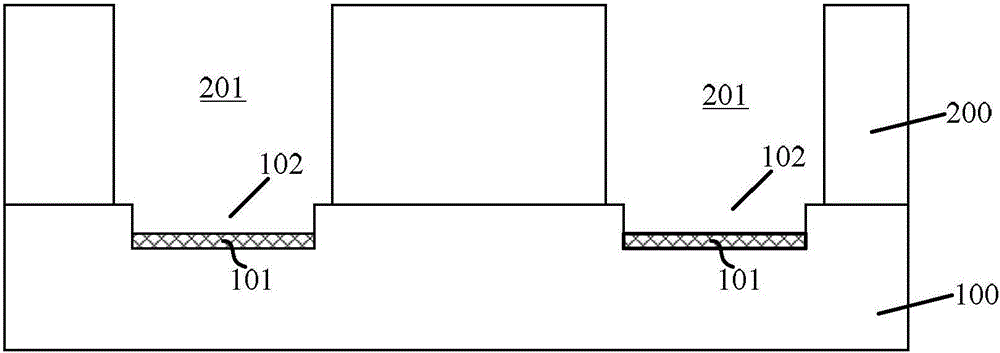Semiconductor structure and forming method thereof
A semiconductor, regular polygon technology, applied in the direction of semiconductor devices, semiconductor/solid-state device manufacturing, semiconductor/solid-state device components, etc., can solve problems such as cracking or falling off, chip packaging failure, affecting product yield, etc. The effect of shedding and uniform stress distribution
- Summary
- Abstract
- Description
- Claims
- Application Information
AI Technical Summary
Problems solved by technology
Method used
Image
Examples
Embodiment Construction
[0021] Specific implementations of the semiconductor structure and its forming method provided by the present invention will be described in detail below in conjunction with the accompanying drawings.
[0022] Please refer to figure 1 , providing a substrate 100, the surface of the substrate 100 has a groove 101, and the groove 102 exposes the surface of the metal layer 101.
[0023] The substrate 100 is a multi-layer structure, including a semiconductor layer and a dielectric layer located on the surface of the semiconductor layer, a semiconductor device located in the semiconductor layer, a metal interconnection structure in the dielectric layer, and the like. The metal layer 101 is a solder pad, which serves as a connection structure with an external circuit after packaging, and the material of the metal layer 101 can be metal such as Al, Cu or Au. The size of the metal layer 101 may be the same as the size of the groove 102 or larger than the size of the groove 102 .
...
PUM
 Login to View More
Login to View More Abstract
Description
Claims
Application Information
 Login to View More
Login to View More - R&D
- Intellectual Property
- Life Sciences
- Materials
- Tech Scout
- Unparalleled Data Quality
- Higher Quality Content
- 60% Fewer Hallucinations
Browse by: Latest US Patents, China's latest patents, Technical Efficacy Thesaurus, Application Domain, Technology Topic, Popular Technical Reports.
© 2025 PatSnap. All rights reserved.Legal|Privacy policy|Modern Slavery Act Transparency Statement|Sitemap|About US| Contact US: help@patsnap.com



